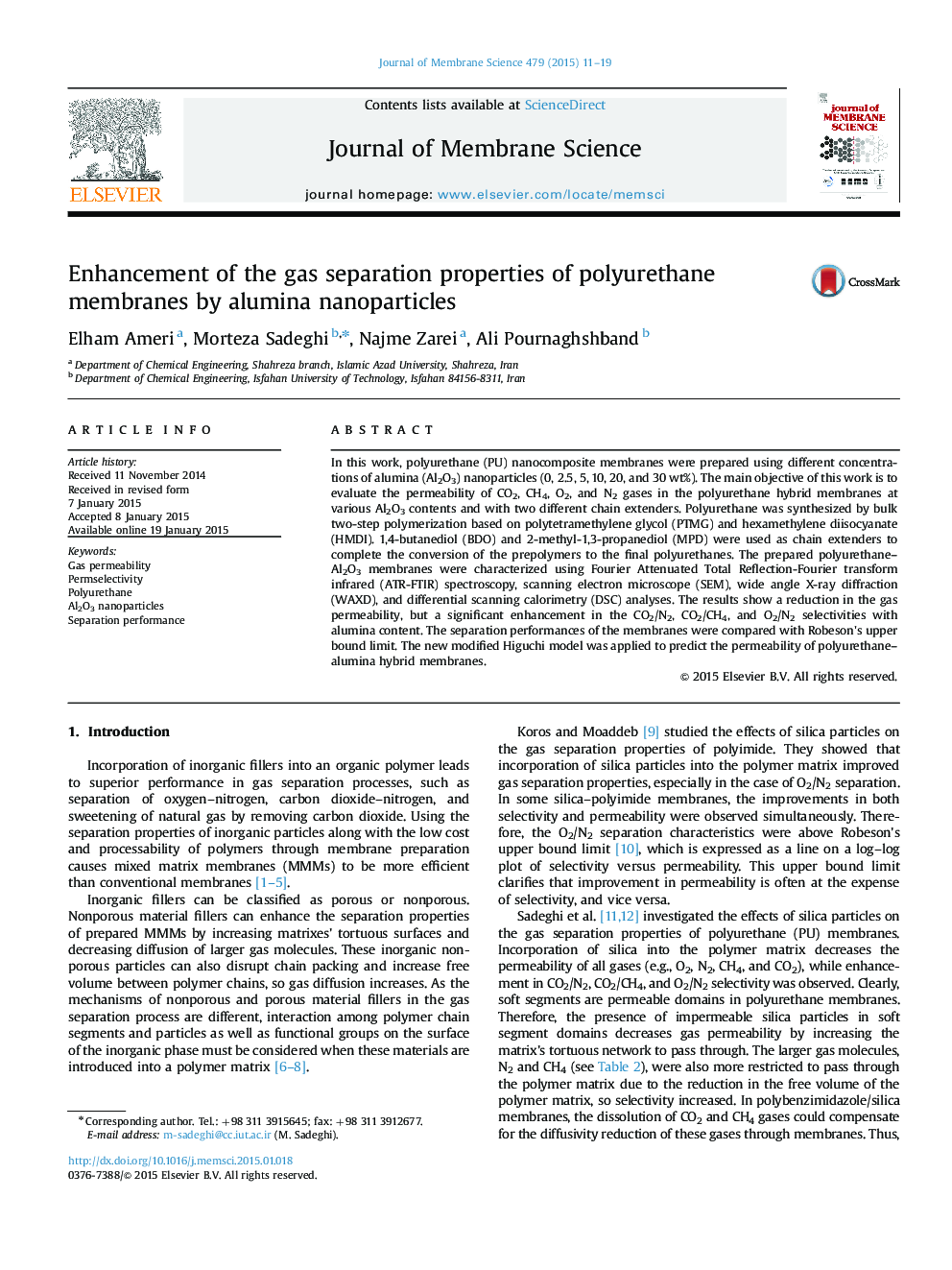| Article ID | Journal | Published Year | Pages | File Type |
|---|---|---|---|---|
| 633106 | Journal of Membrane Science | 2015 | 9 Pages |
•Polyurethane/alumina nanocomposite membranes were prepared up to 30 wt% of Al2O3.•Two kinds of polyurethanes were synthesized based on PTMG–HDI–BDO and PTMG–HDI–MPD.•PU–Al2O3 hybrid membranes were characterized using FTIR, SEM, WAXD and DSC analyses.•The gas permeation decreased by Al2O3 content, but gas selectivities increased.•The modified Higuchi model in new expression was used to model the permeability of gases.
In this work, polyurethane (PU) nanocomposite membranes were prepared using different concentrations of alumina (Al2O3) nanoparticles (0, 2.5, 5, 10, 20, and 30 wt%). The main objective of this work is to evaluate the permeability of CO2, CH4, O2, and N2 gases in the polyurethane hybrid membranes at various Al2O3 contents and with two different chain extenders. Polyurethane was synthesized by bulk two-step polymerization based on polytetramethylene glycol (PTMG) and hexamethylene diisocyanate (HMDI). 1,4-butanediol (BDO) and 2-methyl-1,3-propanediol (MPD) were used as chain extenders to complete the conversion of the prepolymers to the final polyurethanes. The prepared polyurethane–Al2O3 membranes were characterized using Fourier Attenuated Total Reflection-Fourier transform infrared (ATR-FTIR) spectroscopy, scanning electron microscope (SEM), wide angle X-ray diffraction (WAXD), and differential scanning calorimetry (DSC) analyses. The results show a reduction in the gas permeability, but a significant enhancement in the CO2/N2, CO2/CH4, and O2/N2 selectivities with alumina content. The separation performances of the membranes were compared with Robeson׳s upper bound limit. The new modified Higuchi model was applied to predict the permeability of polyurethane–alumina hybrid membranes.
Graphical abstractThe comparison of the prepared polyurethane–alumina membranes with Robeson׳s upper bound limit declares better separation performance for the CO2/N2 pair gas by incorporation of alumina nanoparticles in the membranes.Figure optionsDownload full-size imageDownload high-quality image (109 K)Download as PowerPoint slide
